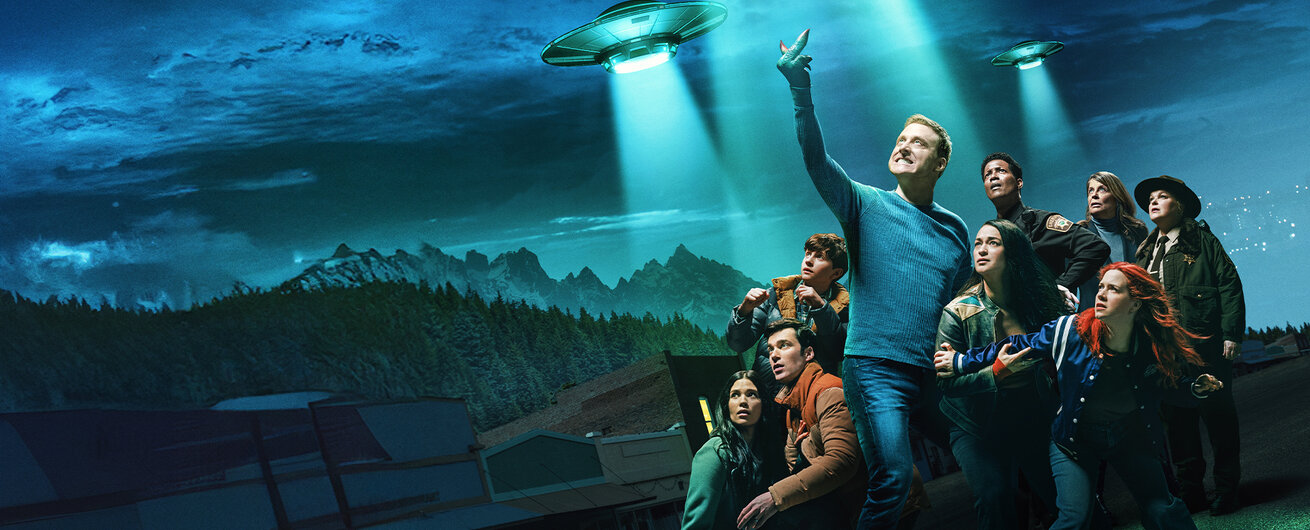Create a free profile to get unlimited access to exclusive videos, sweepstakes, and more!
New survey of the Milky Way reveals 3.32 billion distinct objects
Now that's a group photo!

In SYFY’s Resident Alien (now streaming on Peacock!), an alien with an unpronounceable name makes his way to Earth on a mission of conquest. After taking a human body, in the form of the town doctor Harry Vanderspeigle, and developing human emotions in the process, the alien decides not to destroy humanity. At least for now.
But we can’t depend on the kindness of strange extraterrestrials and we probably shouldn’t give them a chance to bring the fight to our home turf. Everyone knows that the best defense is a good offense, and that means we need to get out there on the cosmic field. Luckily, now we’ve got an even better map of our galactic neighborhood, thanks to a recent survey of the galactic plane.
Andrew Saydjari, graduate student at Harvard University and researcher at the Harvard-Smithsonian Center for Astrophysics was lead author of a new study published in The Astrophysical Journal. Along with an international team of collaborators, Saydjari used the Dark Energy Camera at the Cerro Tololo Inter-American Observatory in Chile – operated by the U.S. National Science Foundation (NSF) – to manufacture what might be the largest astronomical survey ever made.
RELATED: JWST reveals stunning new view of the Pillars of Creation
The team’s reluctance to say it’s the largest photometric survey ever captured comes down to agreeing to define terms and an abundance of caution. “We were very careful, and I will continue to be careful in what I have to say. In part because there are so many different measures of a catalog’s size that it’s not clear how one should make such a claim. Instead, I’ll tell you what it is. It’s 6.5% of the sky, and we’re getting as many stars or more as any other catalog. In terms of the number of objects in a catalog taken with a single camera, I believe it is definitively the largest photometric catalog,” Saydjari told SYFY WIRE.
Six and a half percent might not sound like a lot of the sky, but astronomers focused their efforts (and their telescope’s aperture) on the galactic plane where the concentration of stars is the densest. It’s estimated that there are hundreds of billions of stars in the Milky Way galaxy but many of those are difficult or impossible for us to see. That’s because as you look into the interior the star field gets so dense that everything fades into the background. The cosmic trees vanish into the proverbial forest, if you will. And that’s before we even account for the interstellar underbrush.
“There is a lot of gas and dust in the galactic plane, diffuse structures that are also emitting light. So, trying to make sure you don’t call a piece of that a star is difficult. The other problem is there are so many stars that they often appear like they’re on top of each other in the image,” Saydjari said.
According to Saydjari, the DECam in Chile was critical to producing the data set, thanks to the favorable observing conditions in Chile and the wide field of view the instrument provides. That meant astronomers were able to observe large portions of the sky and resolve more stars than ever before, all at the same time. After that, the trick to their massive star survey came down to post-processing tricks which allowed them to tease out more information than ever before.
The data was sent from the telescope down the mountain to the facilities at NOIRLab where it got a sort of basic post processing: flat fielding and normalization. Then Saydjari and colleagues put the data through additional pipelines of their own design to sift as much out of the data as they could. And they didn’t do it just once. Their catalog went through layers of iterative refinement during which the team would look for every light source they could define, estimate their location and brightness, subtract it from the light field, and see what was left over. Then they’d repeat the process and see if they could find anything they didn’t find before. Then they’d do it again.
The team spent two years and hundreds of hours of open aperture time taking more than 21,000 individual exposures of the galactic plane, each of which went through their pipelines to identify as many objects as possible. By the time they were finished, their map had an estimated 3.32 billion individual objects.
Not only does their survey give us a detailed mapping of those 6.5% of the night sky, but it also provides an opportunity to better understand the workings of our galaxy. “We took it for a reason. One of the reasons was this application to dust. Stars both produce dust and are formed by dust that infall and birth stars. A lot of our understanding of the life cycle of stars and the structure of the galaxy can be traced by where the dust is,” Saydjari said.
Dust between the Earth and distant stars causes them to appear both dimmer and redder than they otherwise would. Using the data, astronomers can reconstruct how much dust is between us and each star in the cosmic distance.
“By taking these big catalogs of billions of stars, we can make an inference of where the dust is along the lines of sight and try to reconstruct 3D maps of the dust. One of our big applications is 3D dust mapping and making a more detailed 3D map of the dust in our local atmosphere,” Saydjari said.
A robust map of where active stars exist, coupled with the distribution of dust and star-forming regions could allow us to more clearly see where stars might have burned in the past and where the star systems of the future might arise. Then we might get an advanced warning of any planet-killing interlopers posing as small-town physicians.
In the meantime, prepare for the inevitable invasion with Resident Alien, streaming now on Peacock.
































